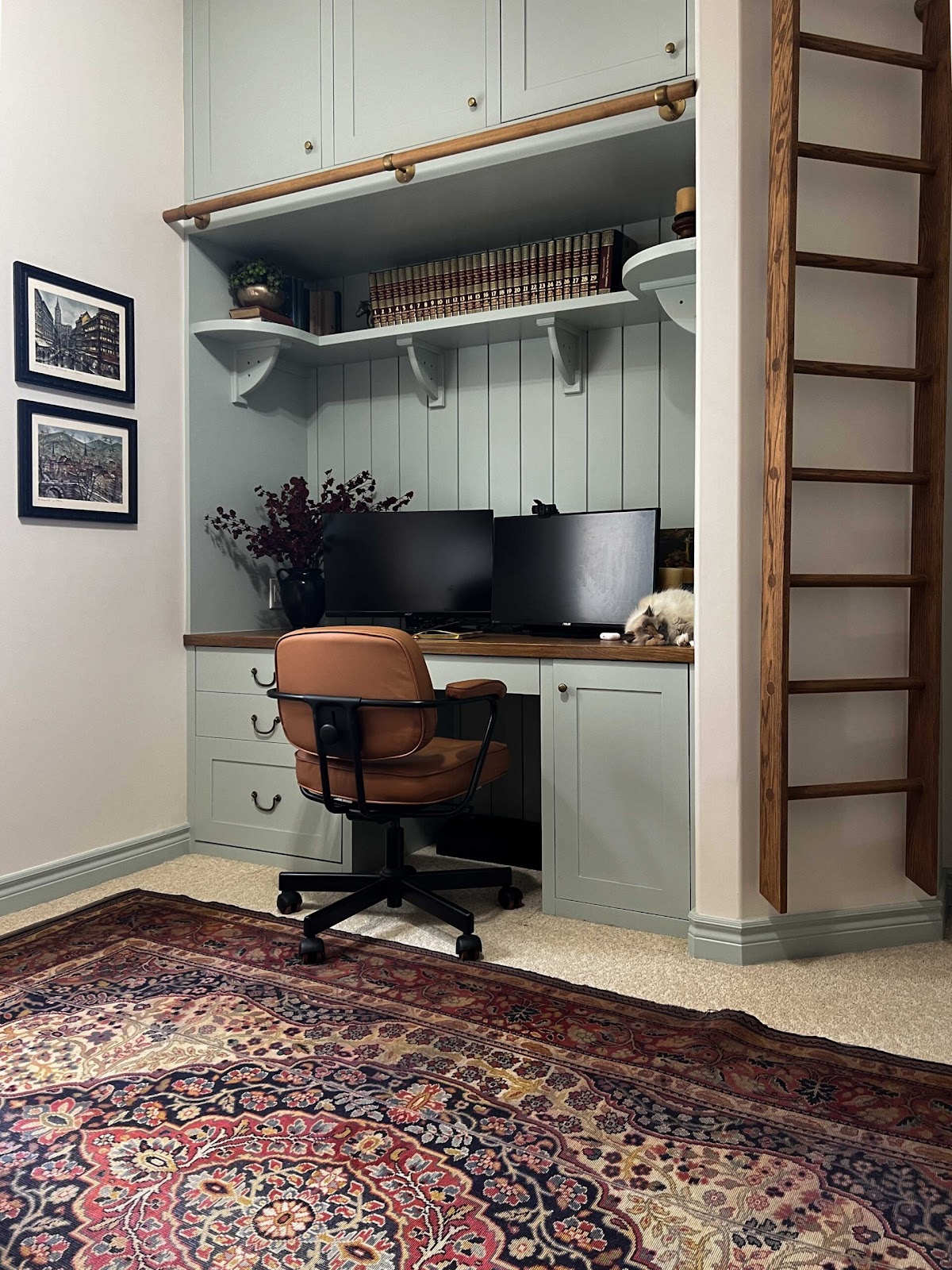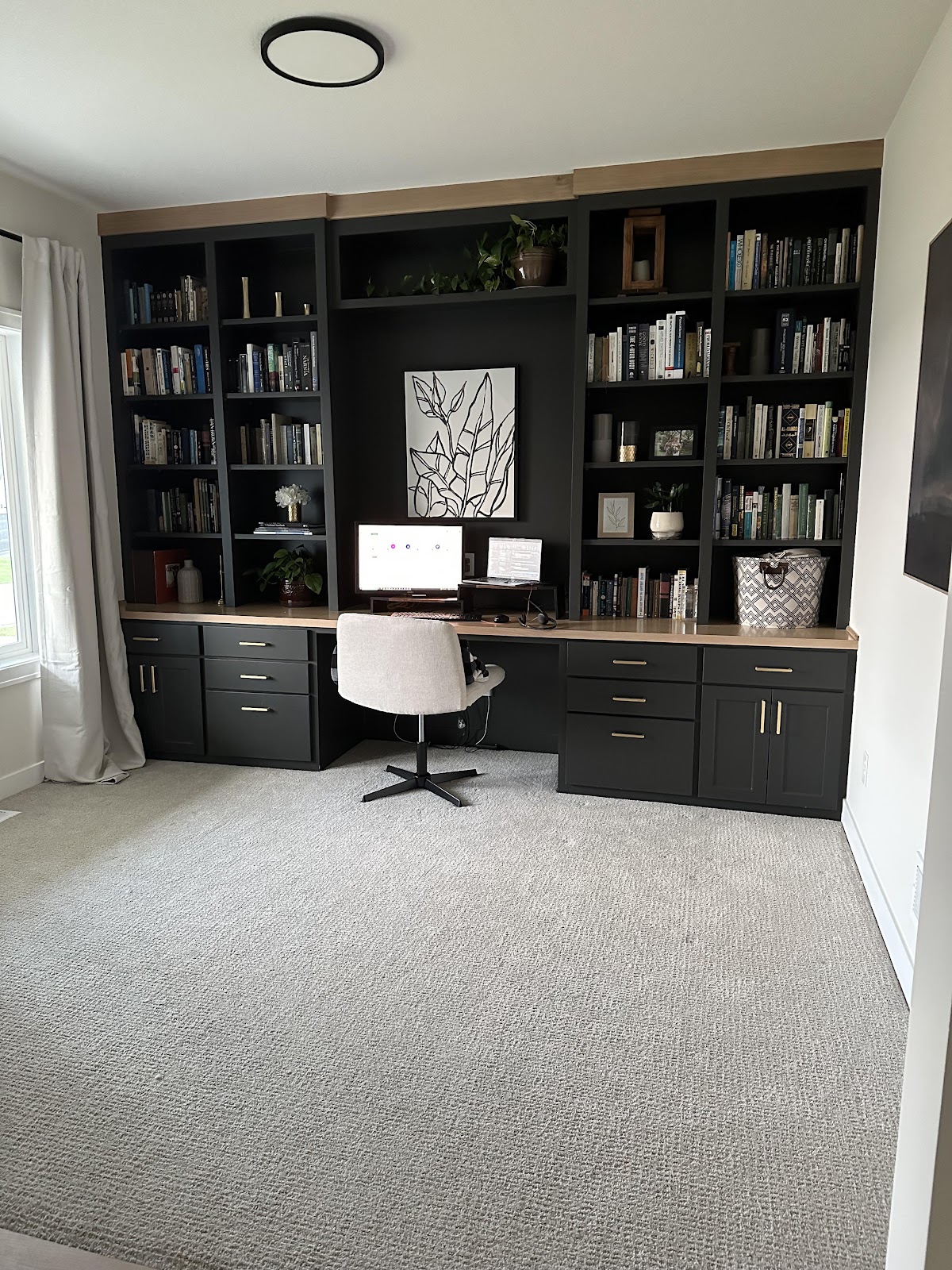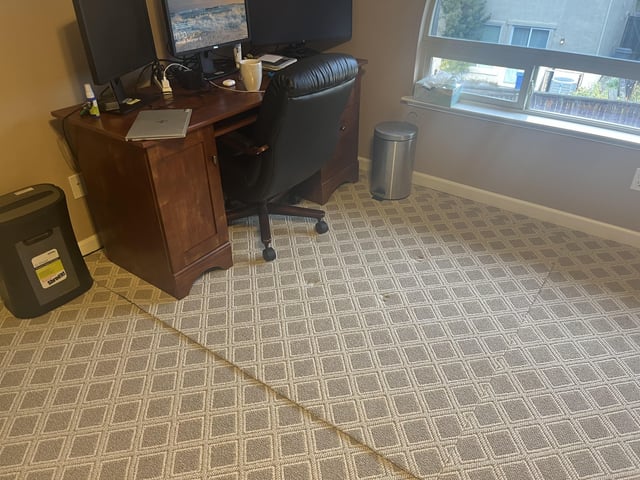Yes, you should consider putting carpet in your office. It offers several benefits, like comfort and noise reduction.
Choosing the right flooring for your office can be a tricky decision. Carpet might seem like a simple choice, but it carries more significance than you might think. Carpeting can influence the overall environment of your workspace. It adds a touch of warmth and comfort that can make your office feel more inviting.
Moreover, it helps in reducing noise, creating a more peaceful and productive atmosphere. But is it the best choice for your office? Let’s explore the pros and cons to help you decide if carpet is the right fit for your workspace.

Benefits Of Carpet
Choosing the right flooring for your office can significantly impact your work environment. Carpeting in offices is a popular choice for many reasons. Here, we’ll explore the benefits of carpet, focusing on its comfort and warmth, as well as its sound absorption qualities.
Comfort And Warmth
Carpet adds a layer of comfort and warmth to any office space. It’s soft underfoot, making it a pleasant surface to walk on throughout the day. Here are a few key benefits of carpet in terms of comfort and warmth:
- Soft and Cushioned: Carpet provides a cushioned surface that reduces the strain on your feet and joints. This can be especially beneficial in offices where employees are on their feet often.
- Warmth: Unlike hard flooring options, carpet retains heat, making your office feel warmer and more inviting. This is particularly useful during colder months.
- Insulation: Carpet offers excellent insulation, helping to maintain a consistent temperature in your office. This can reduce heating costs and create a more comfortable environment.
- Variety of Options: Carpets come in various materials, textures, and thicknesses. You can choose a carpet that best suits your comfort needs and aesthetic preferences.
Consider the following table that summarizes the benefits of carpet for comfort and warmth:
| Benefit | Description |
| Soft and Cushioned | Reduces strain on feet and joints |
| Warmth | Retains heat, making the space warmer |
| Insulation | Helps maintain consistent temperature |
| Variety of Options | Choose from different materials and textures |
Sound Absorption
One of the standout benefits of carpet is its ability to absorb sound. This can be especially important in an office setting where noise levels can impact productivity and focus. Here’s why carpet is excellent for sound absorption:
- Noise Reduction: Carpet fibers trap sound, reducing the amount of noise that travels through the office. This can create a quieter and more serene work environment.
- Improved Acoustics: By absorbing sound, carpet can improve the acoustics of a room. This makes it easier to hear conversations without echoes or background noise.
- Less Distracting: A quieter office means fewer distractions. Employees can concentrate better, leading to increased productivity.
- Privacy: Carpet can help maintain privacy by reducing the noise that escapes from meeting rooms or private offices.
Here’s a quick overview of how carpet aids sound absorption:
| Benefit | Description |
| Noise Reduction | Traps sound and reduces noise levels |
| Improved Acoustics | Enhances room acoustics by absorbing sound |
| Less Distracting | Creates a quieter environment, minimizing distractions |
| Privacy | Reduces noise leakage, maintaining privacy |
Types Of Carpet
Choosing the right carpet for your office is an important decision. The type of carpet you select can affect the look, feel, and functionality of your workspace. There are various types of carpet to consider, but two of the most popular are loop pile and cut pile. Understanding the differences between these types can help you make an informed decision.
Get The Best Carpet Cleaning Service – Click Here
Loop Pile
Loop pile carpets are made by threading loops of yarn through the carpet backing. The loops can be of the same height or different heights, creating various textures. Here are some key features:
- Durability: Loop pile carpets are highly durable and can withstand heavy foot traffic, making them ideal for busy offices.
- Appearance: The loops provide a clean and neat appearance. They can hide footprints and vacuum marks well.
- Maintenance: Easy to clean and maintain. Stains are less noticeable due to the loop construction.
There are different types of loop pile carpets:
| Type | Description |
| Level Loop | Loops are of the same height, creating a smooth and even surface. |
| Multi-Level Loop | Loops are of different heights, adding texture and pattern to the carpet. |
Loop pile carpets are a practical choice for offices, combining durability with a professional look.
Cut Pile
Cut pile carpets are created by cutting the yarn loops, resulting in a softer and more luxurious feel. This type of carpet is known for its plush texture and appealing look. Here are some key features:
- Softness: Cut pile carpets are generally softer underfoot, providing a comfortable feel.
- Appearance: These carpets have a more elegant and luxurious appearance. They are available in a wide range of colors and styles.
- Maintenance: They may require more maintenance compared to loop pile carpets. Footprints and vacuum marks can be more visible.
There are different types of cut pile carpets:
| Type | Description |
| Saxony | Has a smooth, velvety texture, ideal for formal settings. |
| Frieze | Features twisted fibers that give a textured and casual look. |
| Plush | Very soft and dense, providing a luxurious feel. |
Cut pile carpets offer a combination of comfort and style, making them a popular choice for many office environments.
Cost Considerations
Choosing the right flooring for your office is crucial. Carpet is a popular choice, but it’s important to consider the costs involved. Understanding the financial aspects can help you make a wise decision. Let’s explore the cost considerations of installing carpet in your office.
Initial Investment
The initial investment in office carpet involves several factors. These include the cost of the carpet itself, the installation fees, and any necessary preparation work. Here are some key points to consider:
- Carpet Price: The cost can vary greatly. It ranges from $2 to $7 per square foot for standard options.
- Installation Fees: Professional installation typically costs between $1 and $4 per square foot.
- Preparation Work: Removing old flooring and prepping the space may add additional costs.
To give you a clearer picture, here’s a table summarizing the potential costs:
| Item | Cost Range (per sq ft) |
| Carpet | $2 – $7 |
| Installation | $1 – $4 |
| Preparation Work | $0.5 – $2 |
For a 500 square foot office, you might spend between $1,750 and $6,750 on the initial investment. It’s important to budget for these expenses to avoid surprises.
Long-term Maintenance
Long-term maintenance is another crucial aspect of carpet cost considerations. Regular maintenance ensures your carpet lasts longer and remains in good condition. Here are some factors to keep in mind:
- Cleaning: Carpets need regular vacuuming and occasional deep cleaning. Professional cleaning costs around $100 to $300 per session.
- Repairs: Over time, carpets can suffer wear and tear. Repair costs vary but can range from $50 to $200 per incident.
- Replacement: Carpets typically last 5 to 15 years. Replacing them is a significant expense to plan for.
To help you understand the ongoing costs, here’s a table summarizing long-term maintenance expenses:
| Maintenance Item | Cost Range |
| Professional Cleaning (per session) | $100 – $300 |
| Repairs (per incident) | $50 – $200 |
| Replacement (every 5-15 years) | $2,500 – $10,500 |
Considering these costs helps in making an informed decision about installing carpet in your office. Regular maintenance ensures your investment remains worthwhile over time.

Health Factors
Choosing the right flooring for your office is crucial. Carpeting can impact the health of everyone in the space. Let’s explore the health factors to consider before you decide.
Get The Best Carpet Cleaning Service – Click Here
Allergens
Carpets can trap allergens like dust, pollen, and pet dander. This can be a problem for people with allergies or asthma. Common allergens found in carpets include:
- Dust mites
- Pollen
- Pet dander
- Mold spores
Regular cleaning helps, but it might not remove all allergens. Vacuuming with a HEPA filter can reduce allergens. Deep cleaning carpets every 6-12 months is also beneficial.
Here’s a comparison of allergen levels in different flooring types:
| Flooring Type | Allergen Level |
| Carpet | High |
| Hardwood | Low |
| Laminate | Medium |
Consider the needs of your team. If many have allergies, hard flooring might be better.
Indoor Air Quality
Carpets can affect indoor air quality. They can trap pollutants and release them over time. Volatile Organic Compounds (VOCs) are chemicals that can evaporate into the air. New carpets often have high VOC levels.
To improve indoor air quality, consider these tips:
- Choose low-VOC carpets.
- Ensure proper ventilation during and after installation.
- Use air purifiers with HEPA filters.
- Regularly clean carpets to remove trapped pollutants.
Here’s a quick look at the impact of different flooring on air quality:
| Flooring Type | Impact on Air Quality |
| Carpet | Moderate to High |
| Hardwood | Low |
| Tile | Low |
Think about your office environment. Better air quality means healthier employees.
Aesthetic Appeal
When considering whether to put carpet in your office, one major factor to think about is the aesthetic appeal. Carpet can transform a bland office into a warm, inviting space. It adds color, texture, and a sense of comfort. By choosing the right carpet, you can create a professional yet cozy environment that enhances productivity and impresses clients.
Get The Best Carpet Cleaning Service – Click Here
Color Choices
Carpet offers a wide range of color choices, allowing you to match your office décor perfectly. Here are some benefits of different color choices:
- Neutral Colors: Colors like beige, gray, and taupe create a calm and professional atmosphere. They are versatile and match most furniture and wall colors.
- Bold Colors: Red, blue, and green can make a statement and energize the office. These colors are great for creative environments where you want to inspire innovation.
- Dark Colors: Navy, black, and charcoal hide stains and dirt well. They add a touch of elegance and are perfect for high-traffic areas.
- Light Colors: White, cream, and light gray make small spaces look larger. They reflect light well, making the office look brighter and more open.
Choosing the right color can influence the mood of the office. Consider the type of work done in the office. For example, a law firm might prefer neutral tones, while a tech startup might opt for bold, vibrant colors.
Design Flexibility
Carpet offers incredible design flexibility. You can choose from various patterns, textures, and styles to suit your office’s unique look. Here are some design options to consider:
- Patterns: Stripes, geometric shapes, and floral designs can add visual interest. Patterns can also hide wear and tear better than solid colors.
- Textures: Plush, loop, and cut-pile textures provide different feels underfoot. Plush carpets are soft and luxurious, while loop and cut-pile are more durable and practical for office settings.
- Tiles: Carpet tiles are modular and easy to replace. They allow for creative designs, like checkerboard or mosaic patterns.
With carpet, you can also create designated zones within the office. Use different textures or colors to define areas like the reception, workstations, and meeting rooms. This helps in organizing the space effectively.
Another advantage is the ability to customize carpets. Many suppliers offer custom designs to match your brand colors or logo. This adds a personalized touch to your office, making it stand out.
Durability And Longevity
Choosing the right flooring for your office is crucial. Carpet is a popular choice due to its comfort and aesthetic appeal. But, is it durable enough for an office environment? Let’s explore the durability and longevity of carpet in an office setting.
Wear Resistance
Wear resistance is a key factor in carpet durability. Office carpets face heavy foot traffic daily. They need to withstand constant use without showing signs of wear and tear. Here are some points to consider:
- Material: Carpets made from nylon or wool are more durable. These materials resist wear better than others.
- Density: High-density carpets last longer. They handle heavy traffic without flattening.
- Maintenance: Regular cleaning extends carpet life. Vacuum frequently and address stains promptly.
Commercial-grade carpets are often more wear-resistant. They are designed for high-traffic areas. Look for carpets with a high wear warranty. This indicates the manufacturer’s confidence in the product’s durability.
Consider the following table to compare different carpet materials and their wear resistance:
| Material | Wear Resistance |
| Nylon | High |
| Wool | High |
| Polyester | Medium |
| Olefin | Low |
Lifetime Expectations
How long a carpet lasts depends on several factors. Understanding these can help you make an informed decision. Here are some key points:
- Quality: Higher quality carpets last longer. They are made from better materials and have superior construction.
- Traffic: More traffic means more wear. High-traffic areas need more durable carpets.
- Maintenance: Proper care extends carpet life. Regular cleaning and timely repairs are essential.
On average, office carpets last between 5 to 10 years. This varies based on the factors mentioned above. Investing in a high-quality carpet and maintaining it well can maximize its lifespan.
Consider the following tips to extend the life of your office carpet:
- Use entrance mats to reduce dirt and moisture.
- Implement a regular cleaning schedule.
- Rotate furniture to avoid uneven wear.
- Address spills and stains immediately.
By considering wear resistance and lifetime expectations, you can decide if carpet is suitable for your office. Choose a durable material and maintain it well for the best results.
Installation Process
Choosing to put carpet in your office can make the space feel warmer and more inviting. The installation process is a crucial step to ensure the carpet is laid correctly and lasts a long time. Understanding the pros and cons of DIY vs. professional installation, as well as the necessary preparation steps, can help you make an informed decision.
Diy Vs. Professional
Deciding between DIY and professional installation depends on your skills, budget, and time. Here are some points to consider:
- DIY Installation:
- Cost-effective: You save on labor costs.
- Flexibility: Work at your own pace.
- Learning experience: Gain new skills.
- Requires tools and equipment: You need a power stretcher, seam roller, and other tools.
- Risk of mistakes: Improper installation can lead to wrinkles and poor fit.
- Professional Installation:
- Expertise: Professionals have experience and skills.
- Efficiency: The job is done quickly and correctly.
- Quality assurance: Many companies offer warranties.
- Higher cost: You pay for labor and expertise.
- Less hassle: You avoid the physical labor and potential issues.
For a small office, DIY might be manageable. For a larger space, professional installation can save time and ensure quality. Weighing these factors can help you decide the best route for your office carpet installation.
Preparation Steps
Proper preparation is key to a smooth carpet installation. Follow these steps to get your office ready:
- Clear the space: Remove all furniture and items from the room. This includes desks, chairs, and any electronic equipment.
- Clean the floor: Sweep and vacuum the floor to remove dust and debris. A clean surface ensures better adhesion and fit.
- Check for repairs: Inspect the subfloor for damage. Fix any cracks or uneven areas. This prevents future problems with the carpet.
- Measure the area: Accurately measure the room dimensions. Add a few extra inches to your measurements to account for trimming and fitting.
- Prepare tools and materials: Gather all necessary tools and materials. This includes carpet, underlay, adhesive, knives, and a tape measure.
- Plan the layout: Decide the carpet placement. This is especially important for patterned carpets. Ensure seams are positioned in low-traffic areas.
Following these steps helps ensure a smooth installation process. Whether you choose DIY or professional installation, proper preparation leads to better results and a more comfortable office space.
Alternatives To Carpet
Choosing the right flooring for your office is crucial. While carpet is a common choice, it may not always be the best fit. Let’s explore some alternatives to carpet that could be more suitable for your office environment.
Get The Best Carpet Cleaning Service – Click Here
Hardwood Flooring
Hardwood flooring is a popular choice due to its elegant look and durability. It’s easy to clean and can last for many years with proper maintenance. Here are some key benefits:
- Durability: Hardwood floors can withstand heavy foot traffic.
- Easy Maintenance: Spills and dirt can be easily wiped away.
- Allergy-Friendly: Hardwood does not trap dust and allergens.
- Aesthetic Appeal: Adds a touch of sophistication to any office.
There are different types of hardwood flooring, each with its own characteristics:
| Type | Characteristics |
| Solid Hardwood | Made from a single piece of wood; can be sanded and refinished multiple times. |
| Engineered Hardwood | Consists of layers of wood; more resistant to moisture and temperature changes. |
While hardwood flooring can be more expensive upfront, its longevity and low maintenance can make it a cost-effective option in the long run.
Vinyl Options
Vinyl flooring is another excellent alternative to carpet. It is known for its versatility and affordability. Here are some advantages:
- Cost-Effective: Generally less expensive than hardwood.
- Durable: Resistant to scratches, stains, and water.
- Easy Installation: Can be installed over most existing floors.
- Variety: Comes in many styles and colors, mimicking other materials like wood or stone.
There are different types of vinyl flooring available:
| Type | Characteristics |
| Sheet Vinyl | Installed in large sheets; fewer seams, easier to clean. |
| Vinyl Planks | Resembles hardwood planks; easy to install, can be replaced individually if damaged. |
| Vinyl Tiles | Similar to ceramic tiles; available in various sizes and patterns. |
Vinyl flooring’s resilience and low maintenance make it a great option for offices that experience high traffic and need a durable yet stylish flooring solution.
Conclusion And Recommendations
Choosing whether to install carpet in your office is a significant decision. It affects the comfort, aesthetics, and functionality of your workspace. The right choice can improve productivity and employee satisfaction. Here are our conclusions and recommendations to help you decide.
Final Thoughts
Carpet in an office has both advantages and disadvantages. It provides a soft, comfortable surface that can reduce noise levels. This is especially important in open-plan offices where noise can be a significant distraction. Additionally, carpet can improve the overall aesthetic of the office, making it feel warmer and more inviting.
On the downside, carpet requires regular maintenance. It can stain easily and may harbor dust and allergens, which can be a concern for employees with allergies or respiratory issues. Furthermore, high-traffic areas can wear down quickly, leading to the need for frequent replacements.
Considering these factors, here are some points to keep in mind:
- Noise Reduction: Carpet can help absorb sound, reducing noise levels in busy offices.
- Comfort: Provides a softer surface underfoot, which can be beneficial for employees who stand frequently.
- Maintenance: Requires regular cleaning to prevent stains and accumulation of allergens.
- Durability: High-traffic areas may wear out faster, requiring more frequent replacements.
- Aesthetic Appeal: Can enhance the office decor, making it look more professional and inviting.
Making The Right Choice
Choosing the right flooring for your office depends on various factors. Assess your office’s specific needs, such as the level of foot traffic, the presence of employees with allergies, and the overall design aesthetic you aim to achieve.
Here are some recommendations to help you make an informed decision:
- Assess Foot Traffic: High-traffic areas may benefit from more durable flooring options like tiles or hardwood.
- Consider Maintenance: If you prefer low-maintenance options, consider carpet tiles, which are easier to replace if damaged.
- Allergy Concerns: For offices with employees prone to allergies, choose hypoallergenic carpet materials or other flooring options.
- Budget: Carpeting can be cost-effective initially but consider the long-term costs of maintenance and replacement.
- Design Preferences: Choose a style and color that complements your office decor and creates a professional environment.
In summary, while carpet can add warmth and comfort to your office, it requires careful consideration of maintenance needs and potential health concerns. Evaluate your office’s specific requirements and make an informed decision that balances aesthetics, functionality, and practicality.

Frequently Asked Questions
Is Carpet Suitable For Office Environments?
Yes, carpet reduces noise and adds comfort. It also provides a warm, professional look.
What Are The Benefits Of Office Carpet?
Carpet offers noise reduction, increased comfort, and a professional appearance. It can also be easier to maintain.
How To Maintain Office Carpet?
Regular vacuuming and prompt stain removal keep carpets clean. Professional cleaning helps maintain appearance and longevity.
Conclusion
Choosing the right flooring for your office is important. Carpet offers comfort and warmth. It reduces noise and adds a cozy feel. But, it can be harder to clean. Think about your office needs. High traffic areas might need something more durable.
Consider your budget and maintenance capabilities. Carpet can be a great choice, but weigh the pros and cons. Make the best decision for your workspace.
